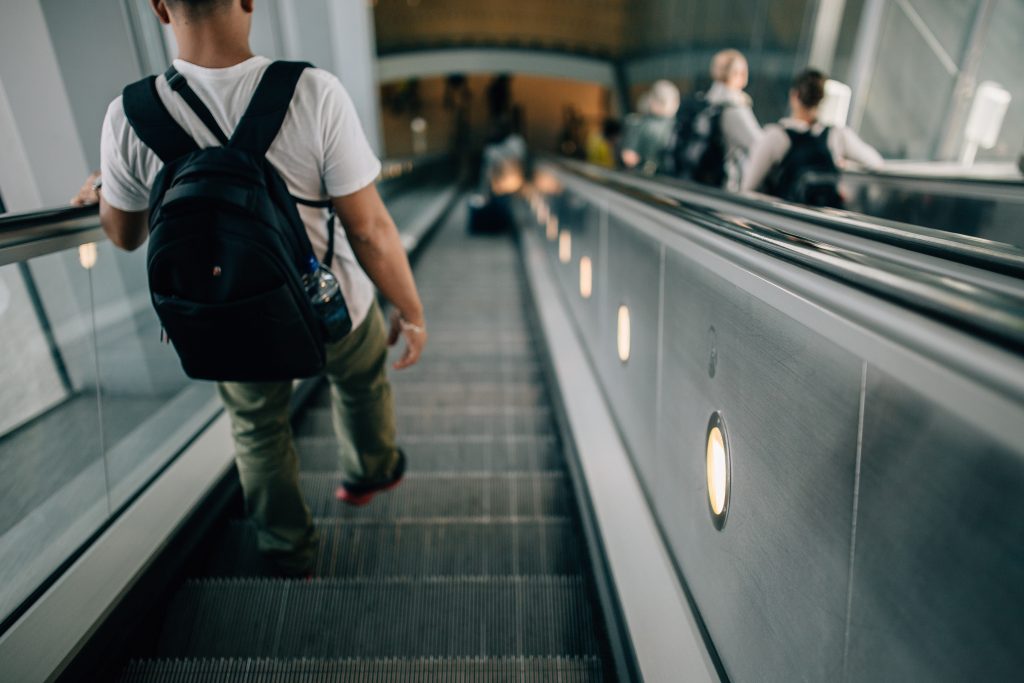Backpacks are an incredibly convenient way for both children and adults to carry the things they need throughout every day. Unfortunately, carrying all these items, while convenient, can place increased stress on your spine, especially if you’re carrying too much and not maintaining proper posture. This added stress, especially when placed upon the spine repetitively, can damage your spinal discs, leading to back pain, among other issues. Fortunately, there are a number of ways to avoid back pain caused by backpacks without having to stop using a backpack, so continue reading to find out.
Why Backpacks Cause Back Pain
Many studies have been conducted in an attempt to determine why backpacks commonly cause back pain in order to understand how it can be avoided.
A 2015 study published in BioMed Research International of 109 children, all seven years old, found that a child’s spine length changed depending on the usual weight of the backpack they carried. This shows that carrying an overly heavy backpack places increased stress on the spine, leading to compression of spinal discs that can likely be attributed to the formation of annular tears.
A more recent study published in 2018 examined what kind of effect walking while carrying a backpack had on the spine. This study determined that when carrying a lightweight backpack equal to about 3% of a person’s own body weight, compression of the spine is reduced while walking. When carrying a backpack equal to or greater than 10% of a person’s own body weight, changes were seen in both how the muscles of the core activate as well as joint loading in the lumbar spine.
So what are the potential causes of this back pain? Joints, ligaments, and muscles in the hips and back try to compensate for the increased weight that carrying an overloaded backpack places on the body, but these body parts can only sustain this extra weight for so long, leading to degeneration. This degeneration then causes stiffness, a loss of range of motion, and pain. This degeneration in the back is what can cause chronic back pain, compressed spinal discs, neck pain, poor posture, limping, and more.
The reason for back pain and the number of other issues overloaded backpacks can cause is what they do to the position of your spine. The spine is never totally straight due to its neutral position being an “S curve”. However, wearing a heavy backpack places strain on the spine that forces it out of this neutral position, forcing pressure to be placed on your spinal discs in a way that can cause them to develop annular tears.
How to Avoid Back Pain Caused by Backpacks
Fortunately, even if you or your child need to wear a backpack every day, there are ways to protect your spine and avoid back pain.
You can start by making sure that the backpack being worn is never heavier than 10% of your own body weight. For children, this may mean closely monitoring the weight of their backpacks and making sure they leave unnecessary books and notebooks at school in order to relieve some of the weight they would usually carry on their backs.
Dr. Ken Hansraj, the co-author of another study of how backpacks impact the spine, explained that even if one only carries a backpack weighing 10 pounds, the total force placed on the spine will be 70 pounds. This is made even worse if you walk uphill while carrying a heavy backpack because it places greater weight on the spine. In this example, walking uphill could cause the 70 pounds of force to increase up to 120 pounds of force.
In addition to making sure your backpack isn’t too heavy, there are some other tips that may help you avoid back pain when carrying a backpack.
- When wearing a backpack, keep both straps on and keep them tight. You should also practice correct posture while wearing the backpack so that less pressure is placed on your spine.
- Don’t allow your backpack to hang more than a few inches below your wais. Wearing a backpack too low forces your shoulders to carry more weight. The optimal position for a backpack is two inches above the waist.
- Wearing backpacks that have wide, padded shoulder straps will also help prevent your backpack from digging into your shoulders, avoiding pain.
- If your backpack has a hip strap, this should be used when your backpack is particularly heavy, as this will help in distributing the weight of the backpack evenly across your back and hips.
- The heaviest items in the backpack should be placed closer to your back.
- When picking up a heavy backpack, remember to use proper lifting technique, bending at your knees and using your legs to lift.
The Discseel® Procedure
If you’ve been living with debilitating neck or back pain caused by degenerative disc disease, a herniated disc, or sciatica and are searching for a treatment option known to provide lasting relief, the Discseel® Procedure could be the right option for you.
This procedure is non-surgical, minimally invasive, and is the only treatment known to be able to both seal and heal annular tears, the cause of most back pain, preventing further leaking and providing long-term relief. Using Fibrin, an FDA-approved substance that is used off-label in this procedure, which is known to encourage tissue growth in other parts of the body, the Discseel® Procedure allows spinal disc tissue to grow and heal itself.
If you’re ready to get long-term relief from your back or neck pain with a treatment that won’t limit your mobility, apply for the Discseel® Procedure today and find out if you’re a candidate for this procedure that has helped so many people living with pain.

